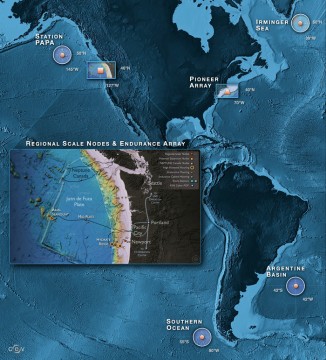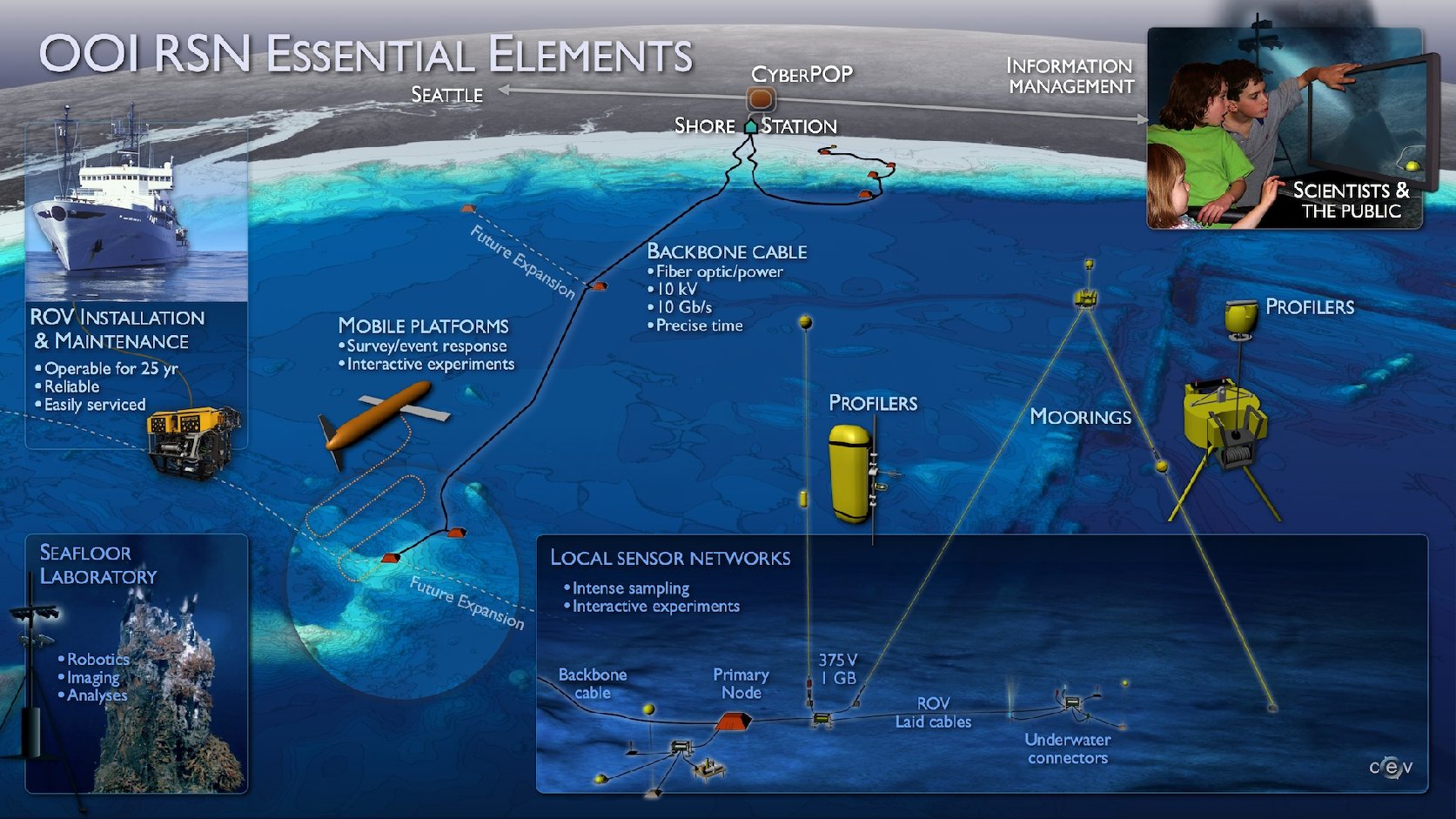The oceans are the world’s largest ecosystem. Encompassing roughly 70 percent of Earth’s surface, they drive global climate and are critical to life on the continents. And yet they are some of the most mysterious and little known places on our planet. But one of the most ambitious ocean research projects ever undertaken is meant to change that.
The Oceans Observatories Initiative, a collaboration among several universities and institutions, is outfitting the global oceans with a suite of instruments that could revolutionize the way scientists study the deep seas. More than 700 instruments and sensors -- including seismometers, mass spectrometers, and high-definition cameras -- are being deployed, some at depths of 10,000 feet. Many will be connected to scientists on shore via Internet-linked cables able to transmit massive streams of scientific data in near-real time. The project, funded by the National Science Foundation, has the potential to change the way we study the ocean. Research in the deep oceans is difficult and expensive, and the time people can spend immersed in this environment is relatively brief. Scientists often study the oceans from aboard ships, sampling and surveying the waters about their vessels. In the constantly shifting and evolving oceans, this type of research has its limitations.

Poised to help overcome many of these research challenges, this new initiative will establish a vast network of monitoring equipment, from the waters off Chile to the coast of Greenland, that will continually monitor undersea activity 24/7 and relay many different types of information to shore. The instruments are expected to operate for at least 25 years, which will allow scientists to monitor changes over time and discern the ocean’s cycles. “The ocean changes on a seasonal basis, an annual basis, on a decadal cycle, and there are even some cycles that are at the century level,” said John Delaney, a professor of oceanography at the University of Washington, who is leading the effort to build one of these cabled underwater observatory systems in the coastal waters of the Pacific Northwest. “We have to have enough of a database collected over a long enough period of time to be able to compare against previous measurements to say, ‘Boy, we’ve never seen that and no one else has either.’” But what happens to the scads of data collected? Does it get secreted away in some digital file cabinet? The Ocean Observatories Initiative is taking a novel approach by making the data available and accessible to everyone, scientists and citizens alike. “Anybody in the country will be able to do oceanography,” said Deborah Kelley, associate director of science for the Pacific Northwest’s cabled underwater observatory. “You won’t have to have a very large proposal funded by a national foundation. Anybody can pick this data up. It’s citizen science. That’s exciting.”

The public could play a key role in unlocking some of the ocean’s mysteries in the same way that online collaborations like Eterna and Foldit enlist public help to solve vexing scientific problems. According to Delaney, the answers they discover could have significant ramifications for the future of all life on Earth. “The ocean is the life-support system for the entire planet. It’s the equivalent of the backpack that the astronauts had on the moon,” Delaney said. “And we need to establish how the ocean is changing, and whether or not it is headed toward some critical tipping point.”